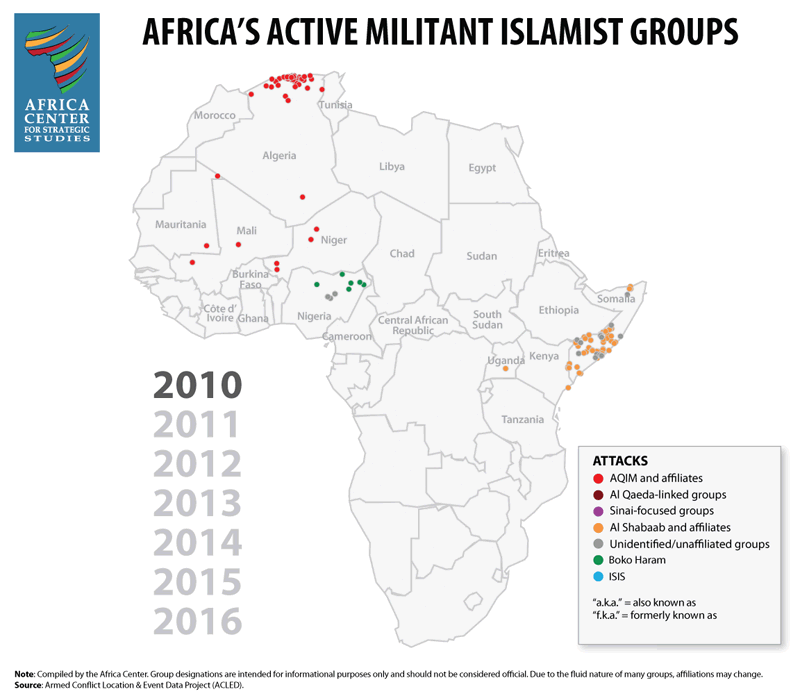
Download individual maps as PDFs:
2010 | 2011 | 2012 | 2013 | 2014 | 2015 | 2016 ‖ all maps (.zip)
Highlights
- The geographic spread and frequency of violent events linked to militant Islamist groups in Africa has expanded steadily since 2010, with a peak in 2015. Eight African countries now regularly face attacks by an assortment of militant Islamist groups.
- In North Africa, there has been an upsurge in episodes involving militant Islamist groups, with escalations in Tunisia (since 2012), Egypt (since 2013), and Libya (since 2015), though with different groups taking the lead in each country. Algeria and Tunisia have also seen an increase in unaffiliated activity suggesting less of a need for local groups to show a link with the global jihad movement.
- Militant Islamist group activity in Africa dropped in 2016 from the previous year. With the exception of al Shabaab, fatalities related to each militant Islamist group declined as well, with those linked to Boko Haram dropping the most (from 11,519 in 2015 to 3,455 in 2016).
- Boko Haram, by far the most lethal of all African militant Islamist groups, has become increasingly confined to an area straddling Nigeria, Niger, Chad, and Cameroon.
- The violent events involving most militant Islamist groups are geographically concentrated, underscoring the local focus of these groups. The exception is AQIM, which lacks a single geographic base but has progressively expanded its operations across multiple Sahelian countries.
More on: Countering Violent Extremism Al Shabaab AMISOM Boko Haram Extremism

